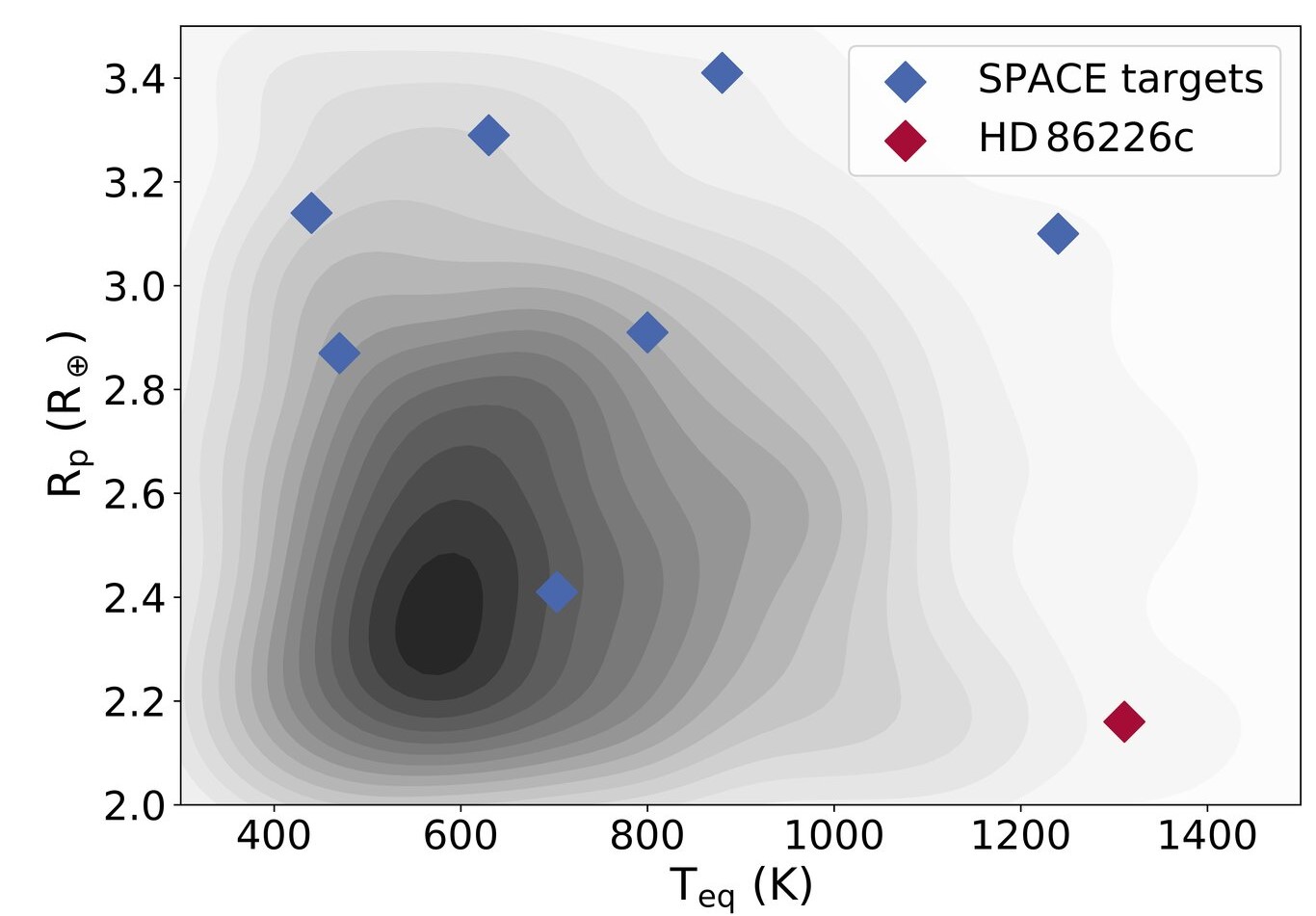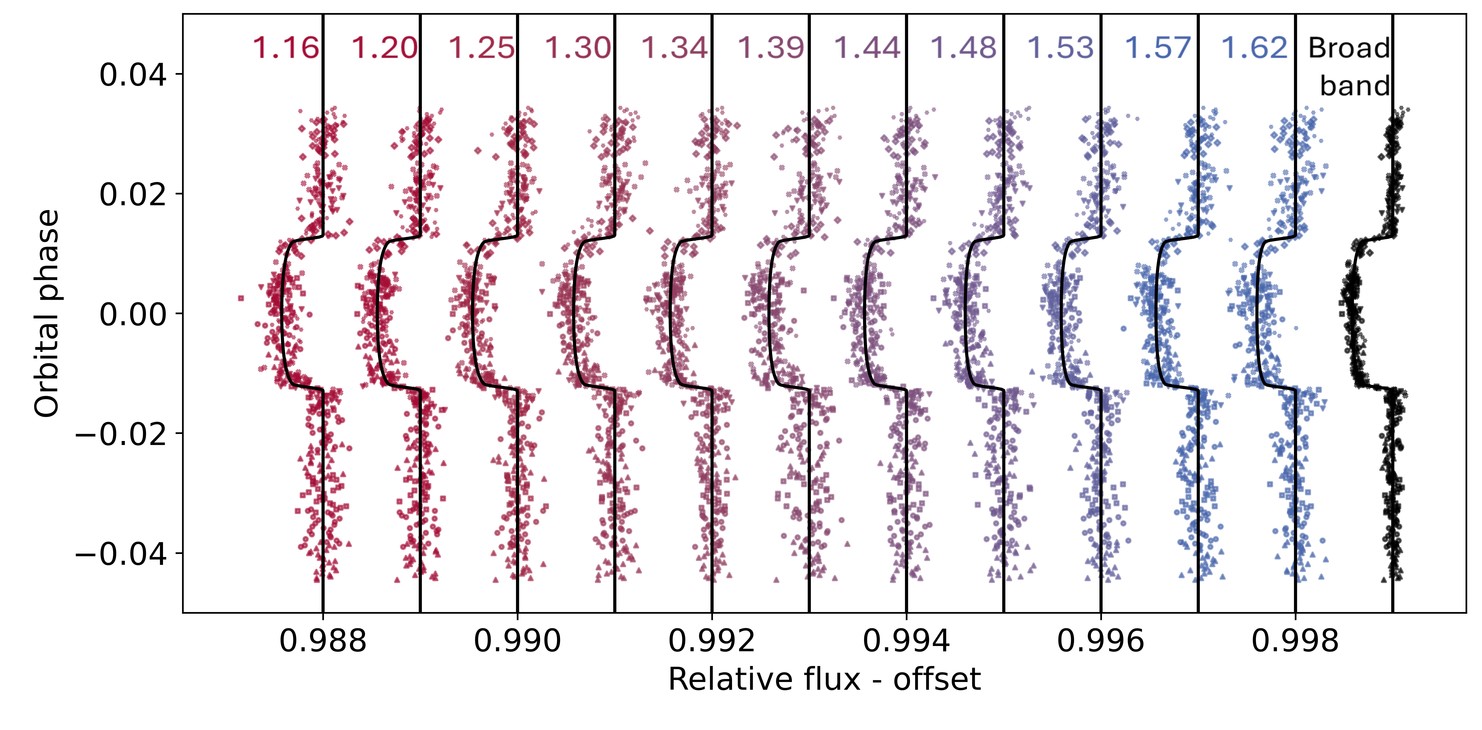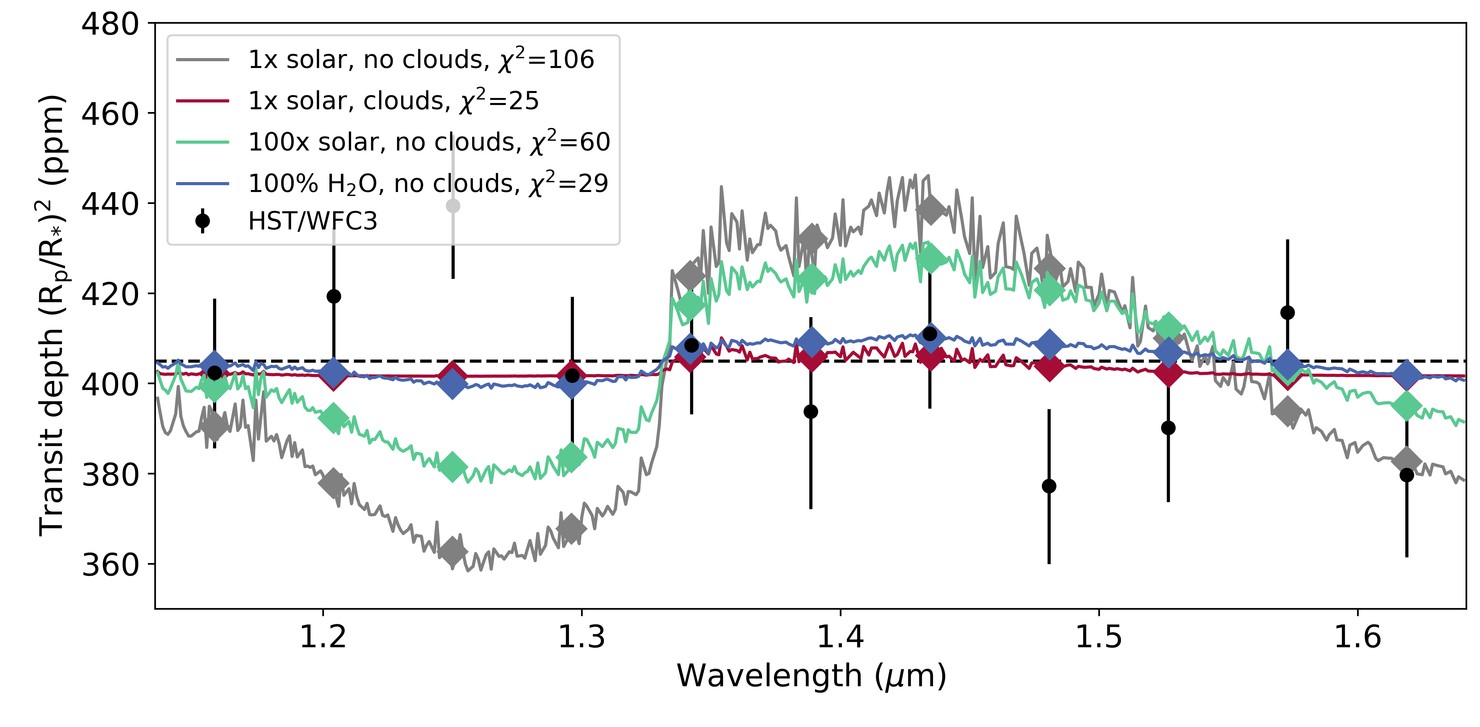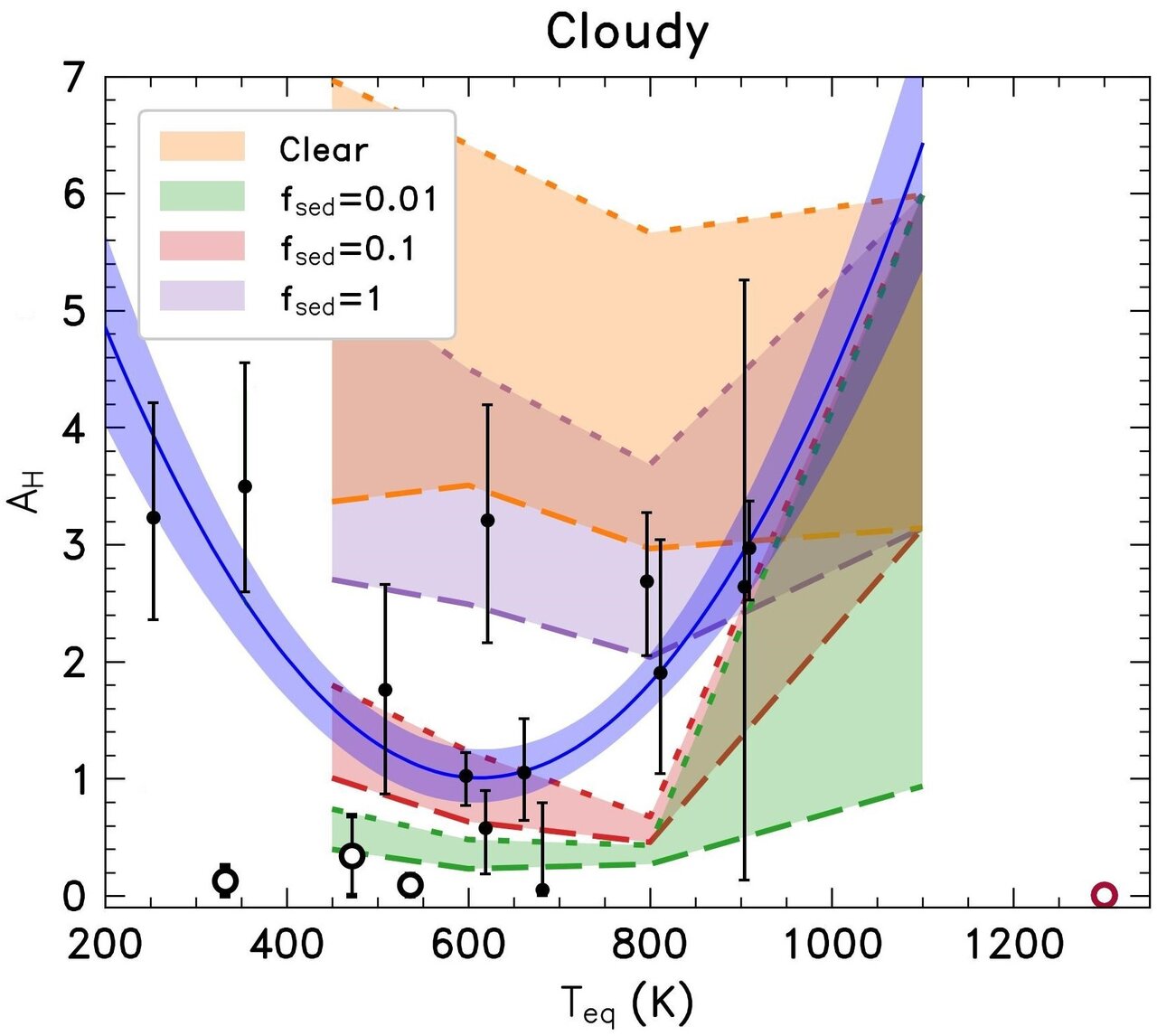First results of the SPACE Program: The surprisingly featureless spectrum of hot sub-Neptune HD 86226c
- 1Department of Atmospheric Physics of Exoplanets, Max Planck Institute for Astronomy, 69117 Heidelberg, Germany (kahle@mpia.de)
- 2Department of Atmospheric Physics of Exoplanets, Max Planck Institute for Astronomy, 69117 Heidelberg, Germany
- 3Department of Physics and Astronomy, University of Kansas, Lawrence, KS 66045, USA
- *A full list of authors appears at the end of the abstract
The abundant class of sub-Neptunes is a bridge between the well-studied gas giants and the mostly unexplored Earth-size planets. The Solar System lacks such a planet, reinforcing the importance of examining sub-Neptunes around other stars. To date, only a few sub-Neptune atmospheres have been successfully characterized, many of which have muted spectral features. Whether this is caused by high mean molecular weight atmospheres, high altitude aerosols, or a different mechanism is still unknown.
The Sub-neptune Planetary Atmosphere Characterization Experiment (SPACE) is a Hubble Space Telescope (HST) Multi-Cycle Treasury Program that aims to explore the physics and chemistry causing these muted features. It combines WFC3 near-infrared transmission spectroscopy and STIS ultraviolet stellar characterization for eight sub-Neptune systems. The targets span a physically motivated grid of planet radius (2 – 3.5 R⊕) and equilibrium temperature (400-1300 K) designed to reveal how sub-Neptune atmospheres are shaped by metal enrichment, disequilibrium chemistry, and aerosols (see Figure 1).

Figure 1: SPACE target systems superimposed on the grayscale density distribution of sub-Neptune exoplanets.
Transit spectroscopy of HD 86226c
Here, we present the first results for the hot sub-Neptune HD 86226c, a 2.2 R⊕ planet on a four-day orbit around its G-type host star. Its proximity to the star heats the planet to high equilibrium temperatures of 1300 K, making it an interesting target that is likely to be free of methane-based photochemical hazes.
Transit spectroscopy takes time-series observations of the star-planet system while the planet passes in front of its host star, blocking a wavelength-dependent fraction of the starlight. To date, seven transits of HD 86226c have been observed with WFC3, and two more are scheduled for observation in May 2024.
For the seven observed transits, we extracted the spectrum with the dedicated data reduction pipeline PACMAN (Zieba & Kreidberg 2022). The light curve from the time series observations was fitted to a transit model, where we corrected the observed flux for systematic deviations caused by the telescope. In addition to the usual telescope systematics, we find that decorrelating the flux from the spectrum position on the detector significantly improves the precision of the light curve. As shown in Figure 2, we divided the spectra into 11 wavelength bins for which the transit models were fitted individually. For these bins, the average root mean square flux deviation from the model is 110 parts per million (ppm).

Figure 2: Spectral light curves of HD 86226c obtained by combining the seven observed transits. The orbital phase is set such that it is zero during transit mid-time. The flux is measured relative to the out-of-transit stellar flux. Individual light curves are displayed offset by 0.002. The central wavelengths of the respective bins are shown by colored numbers in micrometers. Different markers represent data from different transits.
Spectrum analysis
The measured transit depth (Rplanet/Rstar)2 is shown as a function of wavelength in Figure 3. The spectrum agrees well with a constant transit depth of 405 ppm and does not show prominent spectral features. The spectrum was compared to forward models from the radiative transfer code petitRADTRANS (Mollière et al. 2019) for planetary atmospheres. Based on the observed spectrum, a cloud-free solar composition atmosphere is ruled out. The data are consistent with a hydrogen-dominated atmosphere with a cloud layer above 10-3 bar, or a cloud-free atmosphere with a metallicity well above 100 times the solar value. A pure water atmosphere is also consistent with the spectrum.

Figure 3: Transmission spectrum of HD 86226c obtained with the HST WFC3 instrument. The colored spectra show forward models of the planet's atmosphere from petitRADTRANS.
Implications
The featureless near-infrared transmission spectrum of HD 86226c implies that the hot sub-Neptune does not follow the trend of Neptune-sized objects identified by Brande et al. (2024), who predict an increasing feature size for planets with equilibrium temperatures over 700K (see Figure 4). While the high temperatures on this planet disfavor the formation of methane-based hazes, it is possible that the presence of silicate clouds mutes the spectral features. Alternatively, the flat spectrum can also be explained by a possible high metallicity of the atmosphere of the planet.
We demonstrate that hot sub-Neptunes do not guarantee the presence of large features in their spectra. To understand the composition of their atmospheres, it will be important to observe these targets with high-sensitivity instruments such as the James Webb Space Telescope. Following up with observations of a larger sample of sub-Neptunes will be a key strategy for characterizing the physical processes in the atmospheres of these small planets.

Figure 4: Spectral feature amplitude, AH, as a function of equilibrium Temperature, Teq, for the (sub-) Neptune sample analyzed by Brande et al. (2024, black) and of HD 86226c (red). Colored shaded regions show the feature amplitudes predicted by the models of Morley et al. (2015) for different cloud parametrizations.
References:
- Zieba & Kreidberg 2022, JOSS, 7, 4838
- Mollière, et al. 2019, A&A, 627, A67
- Brande, et al. 2024, ApJ, 961, L23
- Morley, C. V., et al. 2015, ApJ, 815, 110
Antonio García Muñoz, Bertram Bitsch, Björn Benneke, Caroline Morley, Cyril Gapp, Dave Armstrong, David Wilson, Diana Dragomir, Drake Deming, Eliza Kempton, Enric Palle, Eve Lee, Evgenya Shkolnik, Giannina Guzman Caloca, Grzegorz Nowak, Heather Knutson, Ian Crossfield, Ilaria Carleo, James Jenkins, Jasmina Blecic, Jason Dittmann, Jayne Birkby, Jeff Valenti, Jennifer Burt, Johanna Teske, Jonathan Fortney, Karen Collins, Keivan Stassun, Kevin France, Kevin Stevenson, Kim Angelique Kahle, Lars Buchhave, Laura Kreidberg, Lorena Acuña, Ludmila Carone, Maria Paltoglou, Maria Steinrueck, Mayuko Mori, Mercedes Lopez-Morales, Natalie Batalha, Nathan Whitsett, Paul Mollière, Qiushi Tian, Renyu Hu, Reza Ashtari, Rob Zellem, Ryan Cloutier, Sam Quinn, Seth Redfield, Stephen Kane, Tansu Daylan, Thomas Beatty, Tom Evans, Vincent Van Eylen, Jonathan Brande, Yui Kawashima
How to cite: Kahle, K. A., Kreidberg, L., Mollière, P., and Brande, J. and the SPACE team: First results of the SPACE Program: The surprisingly featureless spectrum of hot sub-Neptune HD 86226c, Europlanet Science Congress 2024, Berlin, Germany, 8–13 Sep 2024, EPSC2024-627, https://doi.org/10.5194/epsc2024-627, 2024.